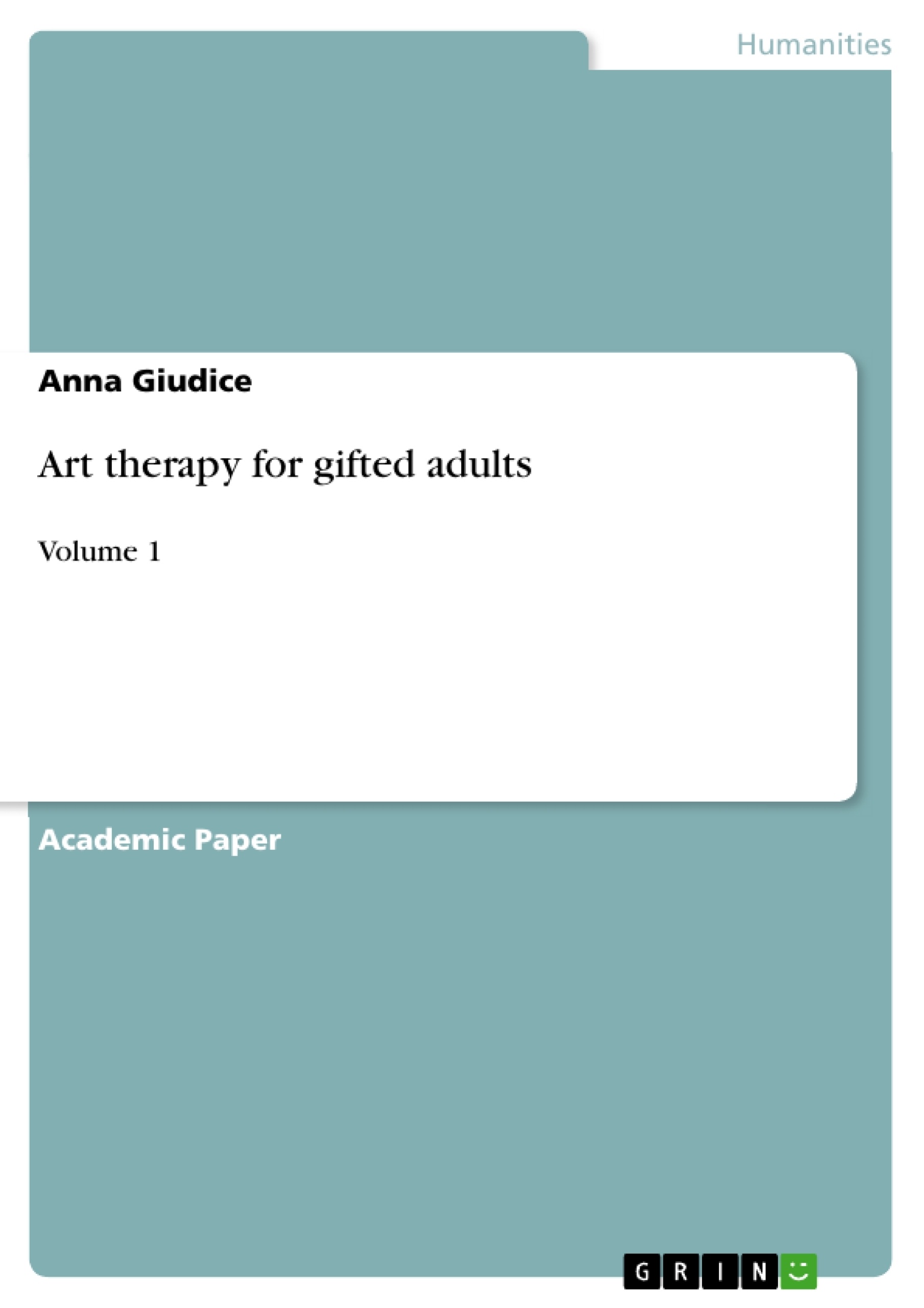This anthology delves into the theory of giftedness in adults and discusses how creative practice can aid in addressing the trauma resulting from the late recognition of neurodivergence.
The research question aimed to explore how gifted adults experienced personal growth and change as a result of engaging in their own art practice. To allow participants to describe change in their own terms, I utilized the concepts of "Understanding, Acceptance, and Transformation" during our interactions. Although I used these terms, I delved deeper into distinguishing between change and transformation. Change was perceived as a temporary phenomenon, while transformation was seen as a more profound and enduring outcome. Transformation was considered as a characteristic trait, while change was viewed as a temporary state.
For this study, I embraced a broad concept of transformation known as psychospiritual transformation, which represents a comprehensive and all-encompassing perspective on the various types of personal transformation a person might undergo. This concept is closely linked to transpersonal theory and involves a sustained and profound reorganization of a person's psychological and spiritual ways of being, their experiences, as well as their self-concept and worldview.
Table of Contents
- Introduction
- 1. Introduction of giftedness in adults
- 1.1. Introduction
- 1.2. Common Characteristics in Giftedness Adults
- 1.3. Defining giftedness
- 1.4. General Support
- 1.5. Intensity
- 1.6. Overexcitability
- 1.7. Asynchronous development
- 1.8. Conclusion
- 2. The characteristics of giftedness
- 2.1 Introduction
- 2.2 Gifted and non-gifted adults
- 2.3 Transitioning from Childhood to Adult Giftedness
- 2.4 The self-perception of gifted women
- 2.5 Conclusion
- 3. Common mistakes in therapy for giftedness adults
- 3.1 Introduction
- 3.2 Understanding the patient's perspective
- 3.3 Giftedness Levels
- 3.4 The Complexity of Simplicity
- 3.5 Conclusions
- 4. Existential depression in gifted adults
- 4.1 Introduction
- 4.2 Dabrowski's Theory on Existential Issues
- 4.3 The Existential Depression
- 4.4 The Conflict
- 4.5 The Perception of the world
- 4.6 Ineffective styles
- 4.7 Effective styles
- 4.8 Conclusion
- 5. The lasting impact of trauma on Gifted Adults
- 5.1 Introduction
- 5.2 The Trauma
- 5.3 Understanding the Relationship Between Complex Trauma and Psychological Disorders
- 5.4 Complex Trauma Risk Factors and Protective Factors
- 5.5 Conclusion
- 6. The Classic Art Therapy
- 6.1 Introduction
- 6.2 Definition
- 6.3 The Therapist
- 6.4 The Patient
- 6.5 The meaning
- 6.6 Conclusion
- 7. Coaching
- 7.1 Introduction
- 7.2 Gifted Therapist and clients
- 7.3 The process
- 7.4 Coaching, mentoring and Therapy
- 7.5 Emotions, thoughts and values
Objectives and Key Themes
This book aims to provide an in-depth understanding of the unique needs and challenges faced by gifted adults. It examines the theory of giftedness and the potential impact of late recognition of neurodivergence on their mental health. The text explores how art therapy and coaching can offer valuable support and guidance in navigating the complexities of giftedness. * **Understanding Giftedness in Adults:** The book dives deep into the concept of giftedness in adulthood, covering its characteristics, challenges, and the specific needs of gifted individuals. * **The Impact of Trauma on Gifted Adults:** The text explores the link between complex trauma and psychological disorders in gifted adults, highlighting the lasting effects of unrecognized giftedness and unmet needs. * **Art Therapy as a Support Tool:** The book emphasizes the importance of art therapy as a valuable intervention for gifted adults, explaining how creative expression can aid in processing trauma and fostering self-discovery. * **Coaching for Personal Growth:** The text discusses the role of coaching in supporting gifted adults in their personal and professional development, emphasizing how tailored guidance can empower them to reach their full potential. * **Existential Depression and Giftedness:** The book explores the connection between existential depression and giftedness, examining the unique challenges and anxieties faced by highly sensitive and intellectually gifted individuals.Chapter Summaries
The first chapter introduces the concept of giftedness in adults, exploring common characteristics, defining giftedness, and highlighting the importance of support for these individuals. It delves into the concepts of intensity, overexcitability, and asynchronous development. Chapter two focuses on the characteristics of giftedness, comparing gifted and non-gifted adults and discussing the transition from childhood to adult giftedness. The chapter also examines the self-perception of gifted women. Chapter three addresses common mistakes in therapy for gifted adults, emphasizing the importance of understanding the patient's perspective and recognizing different levels of giftedness. Chapter four delves into the complexities of existential depression in gifted adults, exploring Dabrowski's theory on existential issues, the experience of existential depression, and the perception of the world by gifted individuals. Chapter five explores the lasting impact of trauma on gifted adults, examining the relationship between complex trauma and psychological disorders. Chapter six provides a comprehensive overview of classic art therapy, covering its definition, the roles of the therapist and patient, and the meaning of art therapy. Chapter seven focuses on coaching as a support tool for gifted adults, discussing the interaction between gifted therapists and clients, the coaching process, and the role of coaching in fostering emotional well-being.
Keywords
This work focuses on giftedness in adults, trauma, art therapy, coaching, existential depression, neurodivergence, late recognition, and support for gifted individuals.- Quote paper
- Anna Giudice (Author), 2024, Art therapy for gifted adults, Munich, GRIN Verlag, https://www.grin.com/document/1488370




